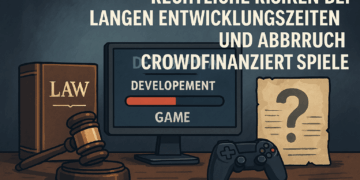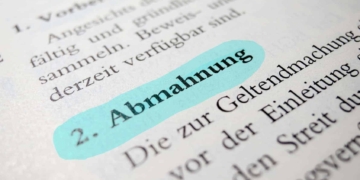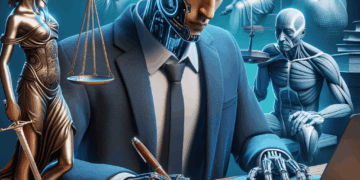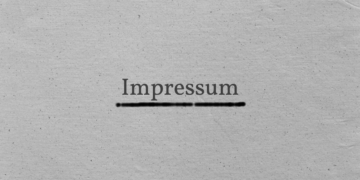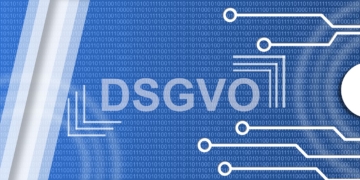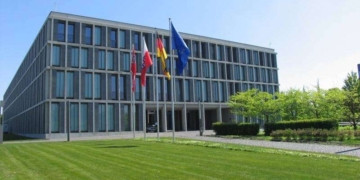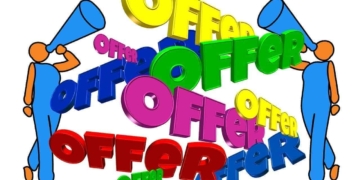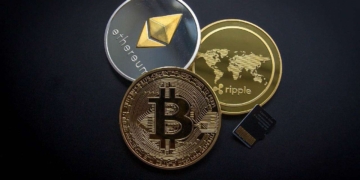The recent ruling of the European Court of Justice (ECJ) in case C-159/23 marks a significant milestone in the field of copyright and IT law. This judgment is particularly relevant for companies and developers in the gaming sector and developers of cheat software and modders, as it provides clarity on the scope of copyright protection for computer programs. As one of the few lawyers in Germany who deal intensively with computer games law, I am following this judgment with particular interest. Since 2012, I have represented Bossland GmbH and its managing directors in similar matters up to the Federal Court of Justice (BGH) and the Federal Constitutional Court, which enables me to analyze the implications of this ruling in depth.
My specialization in gaming law is complemented by extensive experience in related areas of law. Over the years, I have handled numerous complex cases dealing specifically with the copyright implications of cheat software. Successfully resolving these legal issues has not only given me a deep understanding of the technical and legal intricacies of this matter, but has also strengthened my ability to develop innovative solutions to sophisticated challenges at the intersection of law and technology. For me, having advised Bossland GmbH on cheat software matters for many years, the judgment is also particularly exciting.
Legal issues in the area of cheat software represent a highly dynamic field at the interface of technology and law. I can tell you this from my own experience. And it is extremely rare for courts to also demonstrate technical expertise!
Background to the procedure
This legal dispute centers on the legal dispute between Sony Computer Entertainment Europe Ltd. (Sony) and the companies Datel Design and Development Ltd. and Datel Direct Ltd. (Datel) regarding copyright protection rights to computer programs. Sony’s central allegation is that Datel is interfering with Sony’s exclusive rights to modify its copyrighted programs by developing and distributing the software products “Action Replay PSP” and “Tilt FX”. These products allow users to modify variables in the memory of the PlayStation Portable (PSP) in order to unlock unauthorized game options, which in Sony’s opinion constitutes a violation of § 69c No. 2 UrhG.
The Hamburg Regional Court ruled in favor of Sony in the first instance, stating that the modifications constituted an unauthorized modification within the meaning of copyright law, as they interfered with the program sequence and thus changed the protected software. This decision was based on the interpretation of the term “modification”, which is broadly defined and includes any form of change to a computer program, regardless of whether this change is made by directly manipulating the source or object code or by interfering with the working memory.
On appeal, the Higher Regional Court of Hamburg overturned this ruling and dismissed the claim. The Higher Regional Court of Hamburg argued that the mere alteration of variable values in the working memory was not sufficient to justify an infringement of copyright, as these values were not part of the protected source or object code. Rather, they are volatile data that are created during the course of the game and do not cause any permanent changes to the program itself. This view reflects a differentiated interpretation of which elements of a program are considered worthy of protection and which actions actually fall within the scope of copyright protection.
The German Federal Court of Justice (BGH) was confronted with fundamental questions regarding the interpretation of Directive 2009/24/EC, in particular with regard to the scope of protection and the definition of re-engineering in the context of computer programs. The BGH referred questions to the European Court of Justice (ECJ) for a preliminary ruling in order to ensure a uniform interpretation of EU law. The ECJ ultimately ruled that protection under Directive 2009/24/EC is limited to the expression of a program and does not extend to the content of variables in the working memory, provided that these do not contribute to the reproduction or re-creation of the program.
This decision has far-reaching implications for the software industry, as it draws clear boundaries for the copyright protection of computer programs and grants developers more freedom in the adaptation and modification of software. It underlines the need for a precise distinction between permitted use and unauthorized modification in terms of copyright law and provides valuable guidance for future legal disputes in this area.
Legal framework
The legal basis of this case is anchored both in EU law and in international agreements. The focus is on Directive 2009/24/EC of the European Parliament and of the Council of April 23, 2009, which regulates the legal protection of computer programs within the EU. This directive specifies the scope of protection and defines what is considered a “form of expression” of a computer program and which acts are considered “adaptations”. The aim of the directive is to achieve harmonization of copyright protection for computer programs in the member states in order to both strengthen the protection of rights holders and ensure the promotion of innovation and technological development.
International agreements such as the TRIPS Agreement and the Berne Convention are also of key importance. These regulations set the framework for copyright protection at a global level and ensure that protection claims are recognized beyond the EU. In particular, the TRIPS Agreement obliges its contracting parties to protect computer programs as literary works, regardless of their form or function. The Berne Convention extends this protection to all literary works, including computer programs, by recognizing them as creations of the mind.
According to Art. 1 of Directive 2009/24/EC, computer programs are protected by copyright as literary works. Protection extends to all forms of expression, including source code and object code, as well as documented descriptions and user interfaces, provided that they constitute a sufficient creative achievement. However, ideas and principles underlying an element of a program are not protected. This distinction is essential to ensure that protection is limited to the author’s creative contributions while allowing room for innovation.
Article 4(1)(b) of the Directive covers the rightholder’s right to translate, adapt and otherwise transform a program. This provision secures the author’s control over changes to his work that go beyond mere use and constitute an intellectual adaptation. The prohibition of unauthorized use of these adaptation rights by third parties forms a central basis for the enforcement of copyrights in the field of computer programs.
The comprehensive regulation by this directive ensures that authors can effectively protect their creative work without unnecessarily restricting further technical development. It creates a clear legal framework for dealing with computer programs at both national and international level and thus promotes a harmonized legal framework in the digital age.
Key points of the ruling
In its decision, the European Court of Justice (ECJ) dealt with two central questions referred by the Federal Court of Justice (BGH). The first question was whether the protection under Art. 1 (1) to (3) of Directive 2009/24/EC covers the content of variables that a computer program stores in RAM and uses during execution when another program is running at the same time and modifies these variables. The second question concerned the definition of modification within the meaning of Article 4(1)(b) of the Directive: whether it is a modification if another program running at the same time changes the content of variables without affecting the object or source code of the protected program.
The ECJ clarified that copyright protection as set out in the Directive does not cover the content of variables in a running program. The Court stated: “The protection conferred by the Directive does not cover the content of variables which a computer program stores and uses in the working memory of a computer, unless that content contributes to the reproduction or subsequent creation of the program.” This statement makes it clear that the protection extends to the expression of the program, such as the source and object code, and not to temporary data that is modified in the working memory during execution.
With regard to the second question, the ECJ ruled that no further examination was necessary based on the answer to the first question. Since the subject matter of copyright protection does not extend to the content of variables, the modification of this data without code changes does not constitute a reworking within the meaning of the Directive. The Court emphasized: “Since the subject-matter of copyright protection does not extend to the content of variables, there is no need to answer the second question.”
This decision underlines that copyright protection is primarily focused on the static and reproducible parts of a computer program. Dynamic data that is created and modified in the working memory during program execution does not fall under the scope of protection of the Directive as long as it does not contribute to the reproduction or recreation of the program. The Court further clarified: “Protection is limited to the objective and reproducible expression of a program, while functional and dynamic aspects such as the modification of variables at runtime are outside the scope of protection.”
Thanks to this clear demarcation, the ECJ ruling provides precise guidance for future cases in the field of computer program copyright. Developers and users can now assess with greater certainty which modifications to software are permissible without infringing copyright protection. It becomes clear that, in addition to the protection of the code itself, the separation of static and dynamic data is fundamental in order to promote freedom of innovation and the further development of software without unnecessarily restricting the rights of authors.
This decision makes a significant contribution to creating legal clarity in the IT and gaming sector. By limiting protection to the forms of expression, the ECJ enables the flexible use and adaptation of software, which is essential for technological developments, while at the same time safeguarding the creative and economic interests of authors.
Lower courts in detail: From Hamburg Regional Court to Hamburg Higher Regional Court and BGH
First-instance decision of the Hamburg Regional Court
The legal dispute between Sony Computer Entertainment Europe Ltd (Sony) and Datel Design and Development Ltd and Datel Direct Ltd (Datel) concerned the copyright protection rights to computer programs. The Hamburg Regional Court argued that the software products “Action Replay PSP” and “Tilt FX” offered by Datel constituted an unauthorized modification of Sony’s copyrighted games. The court found that these products enable users to intervene in the course of the original games and change their functionality, which constitutes unauthorized adaptation within the meaning of Section 69c No. 2 UrhG. This broad interpretation of the term “modification” covers any form of change to a computer program, regardless of whether this is done by directly manipulating the source or object code or by interfering with the working memory.
The district court interpreted the scope of copyright protection for computer programs broadly and argued that copyright protection extends not only to the source code, but also to the functionality and appearance of the program during execution. This interpretation indicates that the court considered not only the static code but also the dynamic aspects of a program to be worthy of protection.
In addition, the court took Sony’s economic interests into account and stated that Datel’s modifications affect the legitimate economic interests of the rights holder by jeopardizing the integrity of the games and the console system. This reasoning emphasizes the importance of protecting the commercial viability of software products.
Appeal proceedings before the Hamburg Higher Regional Court
The Higher Regional Court of Hamburg overturned the judgment of the Regional Court and dismissed Sony’s claim. It argued that the modification of variable contents in the working memory of the PSP console does not necessarily constitute a reworking under copyright law. As long as the original program code is not modified, but only variables in the working memory are changed, there is no reworking within the meaning of Section 69c No. 2 UrhG. This view reflects a narrower interpretation of what is considered a form of expression of a program worthy of protection.
The OLG placed particular emphasis on the technical functionality of the software modifications and stated that the products in dispute do not interfere with the source code of the original games, but merely manipulate temporary data in the working memory. This was comparable to the use of game saves or cheats, which are generally considered permissible.
Furthermore, the court considered aspects of proportionality and found that a complete ban on software modifications would disproportionately restrict the rights of users and hinder innovation in the field of game modifications.
Finally, the Higher Regional Court of Hamburg explicitly referred to Directive 2009/24/EC and argued that this aims to create an appropriate balance between the protection of rights holders and the interests of users. An overly broad interpretation of the term “reworking” would run counter to this objective.
Legal implications and outlook
The different decisions of the Regional Court and the Higher Regional Court of Hamburg illustrate the complexity of the legal issues in the area of copyright law for computer programs. While the Regional Court took a rather restrictive approach and focused on the protection of rights holders, the Higher Regional Court adopted a more differentiated position that also took into account the technical realities and user interests.
The decision of the Higher Regional Court of Hamburg potentially opened up new scope for the software modification industry and raised fundamental questions about the interpretation of copyright law in the digital age. The subsequent appeal to the Federal Court of Justice and the referral to the European Court of Justice underline the importance of the case for the harmonization of copyright law in the European Union. The final decision could have far-reaching implications for the software industry, particularly in the area of game modifications and the interoperability of software products.
Legal implications
For developers and providers
The ruling of the European Court of Justice offers developers and providers of software modifications a significant increase in legal certainty. The decision clearly defines which types of modifications to software are permissible without this constituting an infringement of copyright. In particular, the court emphasizes that modifications that merely change the content of variables in the working memory without affecting the original expression of the program or causing a duplication of the code are legally unproblematic. This clarification allows developers to make innovative adaptations and extensions that are tailored to the individual needs of users without the risk of having to fear legal consequences. The ruling also promotes a more open and cooperative relationship between software manufacturers and modders, as the legal framework is now more transparent and predictable. Developers can thus work more purposefully on the further development of their products and ensure that their modifications comply with the applicable copyright regulations. This not only strengthens trust in the legal framework, but also contributes to the promotion of creative and technological innovation within the software industry.
For the gaming community
Players and modders in the gaming community will benefit directly from the ECJ’s decision, as they now have a clear legal basis for their activities. The decision confirms that the modification of variable content in the memory of a console such as the PSP does not automatically constitute an infringement of copyright as long as these modifications do not affect the original program structure or code of the game. This gives the community greater scope for creative customization and enhancements that can personalize the gaming experience. Modders can therefore add new features or adapt existing functions without having to worry about being reprimanded by the rights holders. At the same time, the decision ensures that the basic copyright protection mechanisms are maintained so that abuse and unauthorized duplication can continue to be effectively combated. This balance between protection and freedom promotes a vibrant and dynamic gaming community that supports both innovative modifications and fair competition within the industry. Players will be able to enhance and personalize their gaming experience, leading to greater satisfaction and a longer lifespan for games.
For the entire software industry
The ruling of the European Court of Justice has far-reaching implications for the entire software industry, especially in the gaming and IT sectors, which are known for their rapid development and adaptability. By setting clear legal boundaries and at the same time creating freedom for interactive software customization, the ruling provides a stable foundation for future developments in software modification. Companies can now invest in innovative technologies with increased security, as they can be confident that their products are legally protected. This not only promotes further technical development, but also strengthens companies’ competitiveness, as they can react more flexibly to changing market requirements.
Furthermore, the ruling highlights the importance of careful contract drafting and compliance with license terms. Companies are now required to draft their license agreements more precisely in order to clarify which types of changes are permitted and which are not. This clarity minimizes legal risks and protects both rights holders and users of the software from unintentional infringements. Overall, the ruling helps to create a balanced environment that both ensures the protection of intellectual property and strengthens the innovative power and adaptability of the software industry.
For developers and providers, this means that they can develop new products and adapt existing products with greater confidence, without having to constantly react to legal uncertainties. The ability to flexibly adapt software to individual needs while remaining compliant with applicable copyright regulations opens up new business opportunities and fosters a culture of innovation. This is particularly important at a time when technological advances are advancing rapidly and the demand for customized solutions is increasing.
Overall, the ECJ’s ruling represents a significant step towards harmonized and clear case law in the area of copyright for computer programs. It creates an environment in which both creativity and legal certainty can flourish, which ultimately benefits the entire industry.
Conclusion
The ruling of the European Court of Justice (ECJ) in case C-159/23 marks a decisive step forward in IT law, particularly in the area of copyright protection for computer programs. The ECJ clarified that protection under Directive 2009/24/EC is limited to the expressions of a program – specifically the source and object code – and does not extend to temporary data such as variable contents in the working memory, which can be changed during program execution. This clarification has far-reaching implications for the entire software industry, including the gaming industry, as it provides developers and providers with a new legal basis for their activities.
For companies facing similar legal challenges, the ruling provides valuable guidance. It underlines the need to preserve the legal integrity of software projects while creating room for innovation and adaptation. The ECJ’s decision clarifies the boundaries of copyright protection and gives developers more freedom to adapt and modify software without the constant worry of copyright infringement.
The ruling hopefully promotes a legally secure environment that supports creative and technical growth and maintains a balance between innovation and legal integrity. It encourages developers to break new ground and adapt their products flexibly to the needs of their users. At the same time, the ruling emphasizes the importance of a differentiated view of software modifications. While it gives developers more freedom, it still preserves the basic intellectual property rights of authors. By specifying and limiting the scope of protection, the ruling ensures that rights holders continue to be protected against unauthorized reproductions or substantial modifications of their works.
This balancing of interests is of central importance for the further development of the software industry. It promotes fair competition in the digital age and creates an environment in which both innovation and intellectual property can thrive. For companies, this also means an increased responsibility in terms of licensing agreements and contractual arrangements to ensure that all modifications are in line with applicable copyright regulations.
Overall, the ECJ’s ruling helps to create a clear legal framework within which developers can operate. It provides a solid basis for future developments in software modification and strengthens confidence in the European single market as an area for legally secure innovation and technological progress.
Implications and recommendations for the software industry
The ruling of the European Court of Justice (ECJ) in case C-159/23 has significant implications for the copyright protection of computer programs. The decision that protection under Directive 2009/24/EC is limited to the forms of expression and not to the content of variables in the working memory provides developers and companies with a clear legal basis. This clarification makes it possible to develop innovative software solutions without infringing copyright, as long as the modifications do not affect the protected forms of expression. Companies should review their existing software products in the light of this new case law and adapt them if necessary. Transparent contract drafting is also crucial in order to take into account the interests of both developers and users. In case of uncertainty, it is advisable to consult a specialized lawyer.
Ongoing legal developments
The legal landscape in the IT sector is constantly changing. Although the ECJ ruling provides important clarification, many questions remain unanswered. The Bossland GmbH case illustrates the continuing relevance of complex legal issues in the area of software modifications. Despite a positive decision by the Federal Constitutional Court, the case has not yet been concluded and is now being heard by the Leipzig Regional Court. It remains to be seen how the ECJ ruling will influence these proceedings. The Bossland case exemplifies the challenges for innovative software companies and underlines the importance of a clear distinction between permitted innovation and unlawful interference with third-party rights.
Outlook on IT law
The ECJ ruling represents an important step towards clarifying copyright issues, but it by no means marks the end of the discussions. On the contrary, it opens up new perspectives and questions for future court proceedings. It remains essential for legal experts and companies to closely monitor legal developments and adapt their strategies. This ongoing legal evolution underlines the need for continuous expert guidance in this dynamic area of law. The decision could lead to a liberalization of the market for software modifications and enable new business models. At the same time, companies need to rethink their intellectual property protection strategies. In the coming years, it will be decisive how courts, legislators and industry react to these developments. Legal advice will therefore become increasingly specialized, which underlines the importance of experienced specialists.























